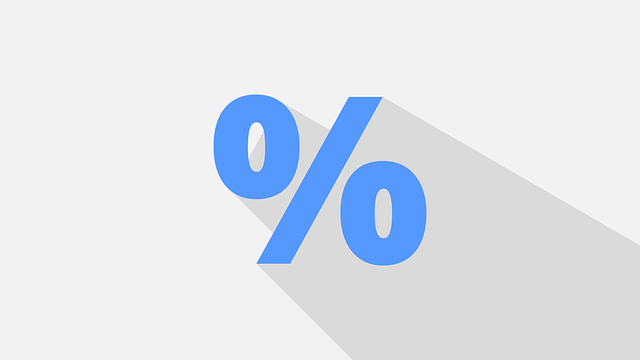Homeowners planning renovations or constructions can benefit from contractor-offered financing options, which include flexible payment schedules, interest-free periods, and a variety of schemes like property-secured loans, lease-to-own programs, and builder financing. These options help manage cash flow, break down large expenses, and prioritize home improvements without compromising on budget. Contractors using such strategies gain a competitive edge, attract new clients, and foster loyalty by removing financial barriers. Effective promotion through marketing is crucial for the success of these initiatives, which involve evaluating creditworthiness to mitigate risk and implementing structured payment schedules and terms to protect both parties from uncertainties.
In today’s competitive construction landscape, offering financing options can be a game-changer for both contractors and customers. This article delves into contractor financing from a customer’s perspective, exploring its benefits and different models available. We’ll guide you through understanding creditworthiness, managing risk, and implementing successful financing programs. Discover how contractors can attract more clients and enhance project accessibility with this powerful strategy.
- Understanding Contractor Financing: A Customer's Perspective
- Advantages of Offering Financing for Contractors
- Different Financing Options for Construction Projects
- Evaluating Customer Creditworthiness and Risk Management
- Implementing and Promoting Contractor Financing Programs
Understanding Contractor Financing: A Customer's Perspective

When customers are considering a home renovation or construction project, understanding contractor financing options is crucial. Many contractors now offer financing plans tailored to suit various customer needs and budgets. This allows clients to access the necessary funds for their projects without the immediate strain of full payment upfront. From flexible payment schedules to interest-free periods, these financing schemes can make significant improvements more affordable and accessible.
From a customer’s perspective, contractor financing provides an opportunity to manage cash flow effectively. It enables folks to break down large expenses into manageable monthly installments, ensuring their savings are not drained all at once. This approach also allows for greater financial flexibility, enabling customers to prioritize other essential expenses without compromising on their desired home improvements.
Advantages of Offering Financing for Contractors

Many contractors are finding that offering financing options to their customers is a game-changer for their business. In today’s competitive market, contractors who provide flexible payment plans can significantly enhance their customer experience and gain a competitive edge. This strategy not only attracts new clients but also fosters loyalty among existing ones, as it allows folks to access services they might otherwise delay or forego due to budget constraints.
By contracting financing for customers, contractors are essentially enabling them to participate in their dream projects without the immediate financial burden. This approach is especially beneficial for larger-scale jobs where costs can be prohibitive. It also helps in navigating labyrinthine budgeting processes and allows customers to focus on the transformation they desire rather than the financial details. In essence, contractors who offer financing are revolutionizing the industry by making services more accessible and affordable.
Different Financing Options for Construction Projects

When it comes to construction projects, contractors often offer various financing options tailored to their customers’ needs. These can range from traditional loans secured against the property, to more flexible arrangements like lease-to-own programs or builder financing plans. Each option has its own set of benefits and considerations.
For instance, some contractors partner with financial institutions to provide competitive interest rates and approved credit terms, making it easier for homeowners to afford their renovation or building project. Others might offer in-house financing that streamlines the process but may come with higher rates. Understanding these different financing options can empower customers to make informed decisions, ensuring they secure the best deal for their construction needs.
Evaluating Customer Creditworthiness and Risk Management

When contractors offer financing to customers, evaluating creditworthiness is paramount. It involves a thorough assessment of the customer’s financial health, including their credit history, debt-to-income ratio, and overall ability to repay. This process ensures that the contractor can mitigate risk, as customers with stronger financial standing are less likely to default on payments. Lenders may employ various tools, such as credit scoring models and financial statement analysis, to gauge a customer’s creditworthiness accurately.
Risk management is another critical aspect of this evaluation. Contractors should consider factors like project complexity, timeline, and potential unforeseen costs that could impact the customer’s ability to repay. A well-managed risk strategy includes implementing robust payment schedules, defining clear terms of financing, and having contingency plans in place for any challenges that may arise during the project. This proactive approach protects both the contractor and the customer from financial uncertainties.
Implementing and Promoting Contractor Financing Programs

Implementing contractor financing programs can be a game-changer for both businesses and their customers. By offering flexible financing options, contractors can attract a broader customer base, including those who may have been previously deterred by budget constraints. This strategy promotes increased sales and business growth while enhancing customer satisfaction. Contractors can partner with financial institutions or utilize in-house resources to structure these programs, ensuring they cater to various payment needs.
Promoting these financing initiatives is key to their success. Contractors should educate their existing and potential clients about the availability of such options. Effective marketing strategies can include highlighting the benefits on websites, social media platforms, and promotional materials. Testimonials from satisfied customers who have utilized contractor financing can be powerful tools to encourage others to take advantage of these flexible payment plans.
Contractors offering financing demonstrates a forward-thinking approach, providing customers with increased flexibility and access to essential construction services. By understanding customer creditworthiness, managing risks effectively, and implementing tailored financing options, contractors can enhance client satisfaction, secure more projects, and foster long-term business relationships. This strategy not only benefits the contractor but also contributes to the overall growth and vibrancy of the construction industry.
